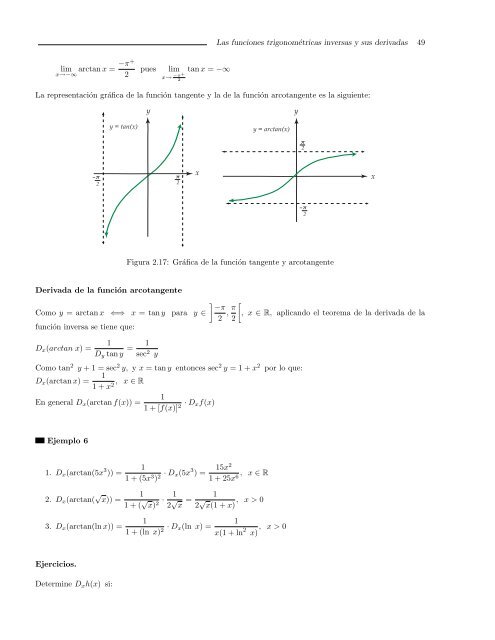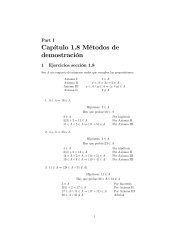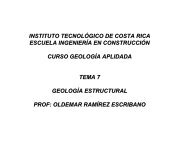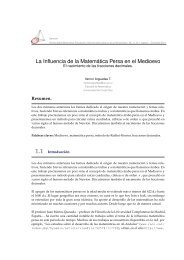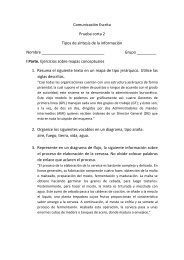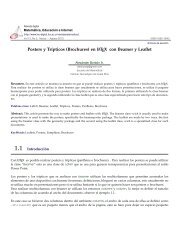Derivada de una función - TEC-Digital
Derivada de una función - TEC-Digital
Derivada de una función - TEC-Digital
You also want an ePaper? Increase the reach of your titles
YUMPU automatically turns print PDFs into web optimized ePapers that Google loves.
−π+<br />
lim arctan x =<br />
x→−∞ 2<br />
pues lim<br />
x→ −π+<br />
2<br />
tan x = −∞<br />
Las funciones trigonométricas inversas y sus <strong>de</strong>rivadas 49<br />
La representación gráfica <strong>de</strong> la <strong>función</strong> tangente y la <strong>de</strong> la <strong>función</strong> arcotangente es la siguiente:<br />
<strong>Derivada</strong> <strong>de</strong> la <strong>función</strong> arcotangente<br />
Como y = arctan x ⇐⇒ x = tan y para y ∈<br />
<strong>función</strong> inversa se tiene que:<br />
1<br />
Dx(arctan x) =<br />
Dy tan y<br />
Figura 2.17: Gráfica <strong>de</strong> la <strong>función</strong> tangente y arcotangente<br />
= 1<br />
sec 2 y<br />
Como tan 2 y + 1 = sec 2 y, y x = tan y entonces sec 2 y = 1 + x 2 por lo que:<br />
Dx(arctan x) =<br />
1<br />
, x ∈ R<br />
1 + x2 1<br />
En general Dx(arctan f(x)) =<br />
· Dxf(x)<br />
1 + [f(x)] 2<br />
Ejemplo 6<br />
1. Dx(arctan(5x 3 )) =<br />
2. Dx(arctan( √ x)) =<br />
3. Dx(arctan(ln x)) =<br />
Ejercicios.<br />
Determine Dxh(x) si:<br />
1<br />
1 + (5x3 ) 2 · Dx(5x 3 ) = 15x2<br />
, x ∈ R<br />
1 + 25x6 1<br />
1 + ( √ ·<br />
x) 2<br />
1<br />
2 √ x =<br />
1<br />
1 + (ln x) 2 · Dx(ln x) =<br />
<br />
−π π<br />
, , x ∈ R, aplicando el teorema <strong>de</strong> la <strong>de</strong>rivada <strong>de</strong> la<br />
2 2<br />
1<br />
2 √ , x > 0<br />
x(1 + x)<br />
1<br />
x(1 + ln 2 , x > 0<br />
x)


